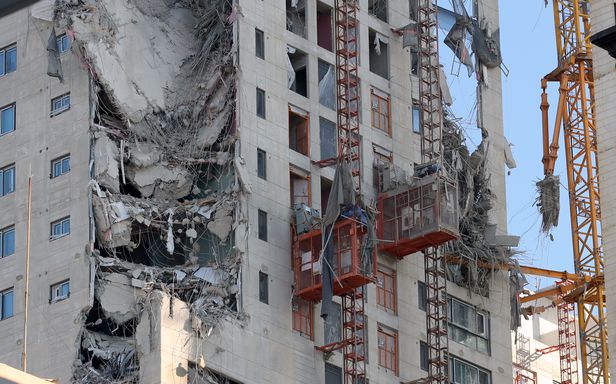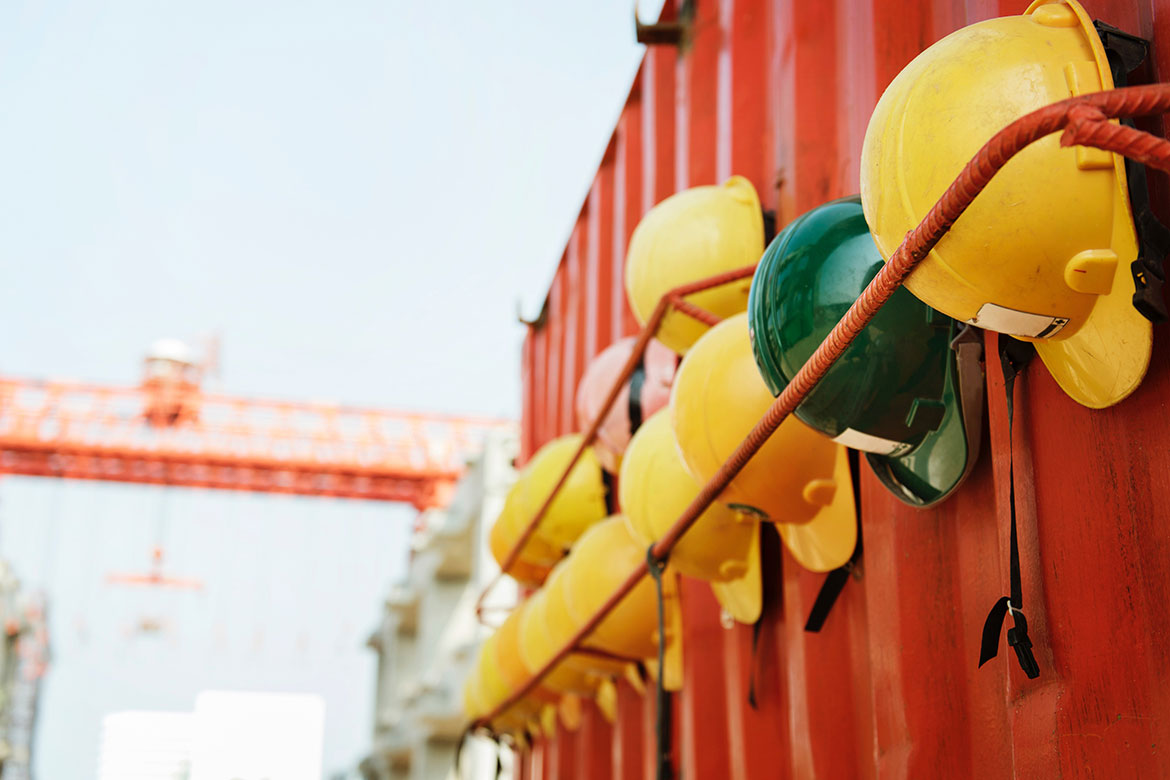Serious Accident Punishment Act: Safety Is a Must, Not an Option
On Jan. 11, 2022, the high-rise part of Gwangju Hwajeong I-Park, which was under construction by HDC Hyundai Industrial Development in Gwangju Metropolitan City, collapsed, killing six workers who were on-site at the time of the accident. As industrial accidents do not cease, there are voices from the Ministry of Employment and Labor (MOEL) and the government saying that changes are needed in industrial safety measures and that those responsible for industrial accidents should be strictly punished. This led to the enactment of the Serious Accident Punishment Act. This Act focuses on punishment rather than accident prevention, considering the cause of the accident and the accountability of the person in charge. While the Ministry of Employment and Labor is investigating industrial accidents, Korean companies are fretting about whether they will be the first to be punished by the Serious Accident Punishment Act. In addition, the extension of the construction period and the increase in labor and safety management-related costs from the introduction of additional safety regulations are putting a great burden on companies. Although the purpose is to reduce man-made disasters in the field, there are also concerns about the effectiveness of the law as to whether the vague regulations can effectively prevent accidents. In this situation, The Sogang Herald intends to discuss the side effects that may arise from the Serious Accident Punishment Act and whether the law can prevent unjustifiable casualties.

Serious Accident Punishment Act
According to the Korea Construction Industry Research Institute’s report on the comparative analysis of OECD countries’ occupational accidents and fatalities, the number of fatal accidents per 100,000 workers in Korea was 3.61 as of 2017. This is not only well above 2.43, the average of 35 OECD member countries, but also the fifth highest. The Korean construction industry has built up its core competitiveness by shortening the construction period through high construction quality and fast work speed. This competitiveness has been encouraged by Korea’s rapid industrialization, urbanization, and industrial exports abroad. However, as the world has changed and the need for a modest working environment and safety has been emphasized, Korea has come to recognize the need for a system suitable for this. As a result, the Serious Accident Punishment Act (SAPA)[1] was enacted.
The SAPA applies to workplaces with 50 employees or more, stipulating penalties for business owners, business managers, public officials, and corporations that cause casualties in violation of safety and health measures. According to Article 4 of the SAPA, if an accident occurs due to the failure of the business owner or manager to fulfill their duty to secure safety and health, a punishment will be imposed. In the event of an accident falling under the SAPA, the owner or manager of the business shall be punished by imprisonment for not less than one year or by a fine of not exceeding ₩1 billion. However, cases where a corporation or institution paid considerable attention to the relevant tasks and did not neglect supervision are exempt. Such law stipulates imprisonment of more than one year, which contrasts with the ‘up to * year imprisonment’ in most punishment regulations.
In addition, the scope of regulation and level of punishment of the SAPA have been expanded by adding ‘serious public accident’ to ‘serious industrial accident’ regulated by the existing Occupational Safety and Health Act[2]. Even if the same safety accident occurs, the punishment for employers or business managers is applied separately to the cases of the workers and public.
1. Serious Industrial Accident[3] (assuming worker damage):
When one or more fatalities occur, two or more injured persons require treatment for more than six months in the same accident, or three or more occupational diseases prescribed by Presidential Decree within one year due to the same harmful factors.
2. Serious Public Accident[4] (assuming damage to the public):
A disaster that occurs due to defects in the design, manufacturing, and management of specific raw materials or products. When one or more deaths occur, ten or more injured persons requiring treatment for two months or more in the same accident occur, or ten or more sick persons require treatment for three months or more due to the same cause.
Concerns about the SAPA– Side Effects Beyond the Purpose of the System
Controversy continues as there are points to be improved as it is a law that has never existed before and was created amid the confrontation between labor and industry. Although the SAPA aims to strengthen the safety of the workplace, it is evaluated as an incomplete law. The corporations are doing their best to reduce accidents and minimize shocks at business sites, but the concern is spreading in the industry regarding the ambiguous contents of the law and the excessive punishment. It is argued that there are many unrealistic provisions to directly comply with the regulations of the law.
The criticism is mainly from the business sector, saying that the content of the bill is comprehensive and ambiguous. Business circles criticize that it is difficult for companies to grasp clear standards because the contents of the responsibility of the manager to be exempted from punishment in the event of a serious accident are unclear. Furthermore, there is a concern that the punishment may be decided according to the arbitrary judgment of the government. Accordingly, the business community is demanding the government to specify the obligations that the person in charge of management must fulfill or to provide exemption clauses. The biggest controversy about the SAPA is that the person in charge of management is not specifically stipulated, so when enacting a law, even law enforcement agencies may be confused about who should be identified and investigated as the person in charge of management. In addition, expressions that may cause disputes in interpretation are used, such as “securing the necessary manpower”, “compilation and execution of the necessary budget”, “practically controlling, operating and managing the business/workplace”, “faithfully”, “adequate”, etc. The industry demands the deletion or correction of ambiguous and unspecified conditions used as the elements of the crime. It further emphasizes that active amendments must be made to the legislation to minimize the problems of the current law to offset the possibility of a legal battle over who is responsible.
Companies are responding to industrial accidents by appointing the Chief Safety Officer (CSO), establishing a safety team, or reorganizing existing organizations. Small and medium-sized construction companies are also struggling to come up with countermeasures for the SAPA. However, unlike mid-to-large construction companies, small and medium-sized construction companies that do not have easy access to sufficient funds and manpower are burdened with hiring safety management personnel.
There is also the argument that the law focuses on legal punishment rather than safety prevention. This raises concerns that law firms may misuse the law for their own benefits. Considering that the SAPA specifically stipulates strong punishments for those in charge of business management, which leads to large and expensive legal litigation, it is said it may only revitalize the legal market. In fact, law firms are keeping an eye on the scene of serious accidents and hiring workers from the Ministry of Employment and Labor to advise on cases related to the SAPA.
In addition, there is a blind spot for punishment in the SAPA. Of the 576 workplaces with serious accidents announced recently by the Ministry of Employment and Labor, 484 workplaces with fewer than 50 employees accounted for 84% of the total. However, by law, there is a grace period of two years for businesses with fewer than 50 employees. Moreover, it is pointed out that workplaces with fewer than five workers are not guaranteed the minimum rights as they are even excluded from the application of the law. The labor community expressed an opinion that prevention and protection under the SAPA should be applied without exception, pointing out that most industrial accident deaths occur in workplaces with 5 to 50 employees.

Balancing Safety and Profitability
After the enforcement of the SAPA, a positive effect was shown in that it strengthened the awareness of the safety among companies and the public toward industrial sites and working environments. However, accidents still occur in the construction and manufacturing industries, killing nearly 40 workers in a month since the Act came into effect. This confirms that the law alone cannot prevent serious accidents.
The government should revise detailed guidelines to supplement the vague provisions of the legislation, and businesses should take time to prepare a system centered on guidance rather than punishment. For example, the Special Act on Construction Safety (SACS)[5], which is currently pending in the National Assembly, can supplement the shortcomings of the SAPA. While the SAPA focuses on punishing business managers, the SACS is a bill that holds managers and site managers accountable, reminding those directly involved in construction sites to pay attention to safety. The government and the construction industry have different opinions on this bill. The Ministry of Land, Infrastructure, and Transport[6] expects that “SACS will play a complementary role with the SAPA when implemented”; however, the construction industry opposes the introduction of SACS, saying, “there is a high possibility that it will become a double regulation.”
Safety is ultimately guaranteed only when a safe work site is ensured. The government and politicians should set preventive measures and discard outdated ideas such as the universalism of punishment, which seeks to reduce accidents without adequate consideration for construction sites. Support to prevent accidents may be more effective than consequential punishment. This will be even more so for small and medium-sized construction companies that cannot afford to pay sufficient attention to safety. It is important to be reminded that spending to prevent accidents is an investment, not an expense. It is also necessary to prevent impractical construction progress by allowing sufficient construction cost and time to be set. A relaxed adjustment to the liquidated damages[7] should be made through agreement both inside and outside the construction industry. The client should also be aware that excessive construction can lead to overall faulty construction. Keeping promises is fundamentally important, but promises should not make safety an option.
In the industrial field, the phrase Make the impossible possible! means that even if safety is excluded, it should be completed within a certain period regardless of the means and methods. The situation in which numerous sacrifices are forced for completion is a remnant of a wrong practice handed down in the name of industrial tradition. In developed countries, there is an idea that People come first and that People are the country. This has been developed based on the principle of putting people first, that is, safety first. The Korean industry must also put the safety of workers in the industrial field above all else. The purpose of the SAPA is to shine when everyone works together to create a safe workplace.
By Min Seung-youn (Int’l & Social Editor)
piamin03@sogang.ac.kr
